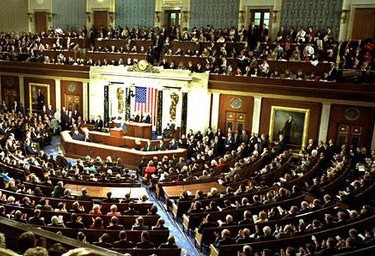|
|
|
|
|
|
|
News & Views item - August 2007 |
![]() US Congress Passes COMPETES. (August 4, 2007)
US Congress Passes COMPETES. (August 4, 2007)
The Creating Opportunities to Meaningfully Promote
Excellence in Technology, Education, and Science Act is about to become
law. ScienceNOW reports: "Last night, Congress completed a
2-year journey down the road to strengthening U.S. research and the education system upon which it rests
by authorizing $43 billion over 3 years for dozens of programs at six
federal research agencies."
strengthening U.S. research and the education system upon which it rests
by authorizing $43 billion over 3 years for dozens of programs at six
federal research agencies."
The strength of the support in both houses of the US Congress surprised even its staunchest supporters with the Senate passing its version of the measure unanimously while the vote in the House of Representatives was 367 for 57 against.
It's believed that the vote demonstrates a recognition by the federal legislators that innovation drives the U.S. economy, and a strong scientific infrastructure provides the basis for innovation. The bill, which runs to over 400 pages is a near perfect reflection of nearly all of the recommendations from a 2005 National Academies' panel that Congress asked to put forward a to-do list of how to preserve a healthy US economy.
Nevertheless there remains a significant caveat. As ScienceNOW's Jeffry Mervis points out : "As with any authorization bill, the legislation contains policy directions from Congress on specific programs, along with suggested spending levels. But an agency's actual budget each year is set by a separate appropriations bill. Even so, the Bush Administration thinks the bill asks for too much. 'It's a nice bill, and its principles are aligned with what the president is trying to accomplish in ACI [President Bushes American Competitiveness Initiative],' says John Marburger, the president's science adviser. 'But it substantially overauthorizes, and my concern is that there won't be enough money to fund everything.'"
The overall objectives of the legislation are to strengthen programs at the National Science Foundation (NSF)--already a major player in precollege, undergraduate, and graduate STEM (science, technology, engineering, and mathematics) education--and significantly heighten the educational initiatives of the Department of Energy (DOE) and its national labs such as Los Alamos.
In addition, increased research budgets are stipulated for the NSF and DOE's Office of Science, and the National Institute of Standards and Technology while creating a new research entity within the DOE, "modeled after the Defense Advanced Research Projects Agency, to speed the development of new energy technologies".
Just how far the bill will be watered down before President Bush signs it into law is the question exercising the coalition of scientific societies, business organizations, and higher education associations which lobbied the US Congress so effectively.
But just why was the lobbying so effective?
As Jeffrey Mervis points out in his August 10 Science write-up: "[S]imilar proposals to bolster science have fallen short in the past? The trick this time around, says Norman Augustine, former CEO of Lockheed-Martin and chair of the panel that produced the [2005, U.S. National Academies' report Rising Above the Gathering Storm], was to argue in terms that the public would understand. 'We quit talking about the virtues of science in the abstract and started talking about its impact on jobs,' he explained about the 2-year lobbying effort by university and industry leaders. 'Everybody understands jobs.'
"[US House of Representative Tennessee Democrat Bart
Gordon, chair of its Science and Technology Committee] praised university
and business leaders for being effective 'cheerleaders' for the new
legislation. But Augustine cautioned that their work is far from over.
'Our biggest challenge is to sustain this coalition for the next 10 to 15
years, because it will take that long for the new jobs to appear,' he
predicts. 'Still, you can't finish if you don't start, and that's what
this bill does.'"